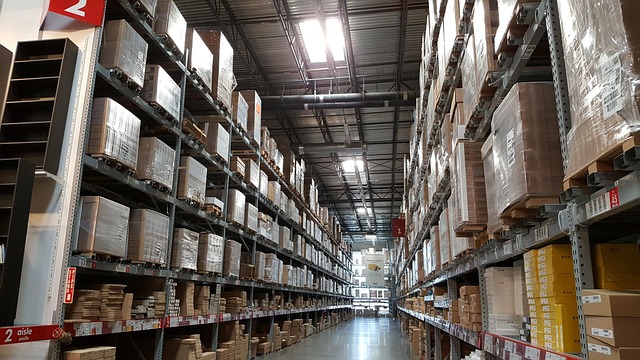Unit heaters optimize heat recovery in commercial and industrial spaces like warehouses through efficient technologies like gas-fired or electric models. Suspended heaters, with forced air heating, offer even temperature distribution, maximizing BTU capacity and reducing energy costs. Ceiling-mounted or portable installations cater to diverse needs, boosting comfort, productivity, and sustainability. Heat recovery systems integrated with unit heaters significantly enhance energy efficiency, reducing carbon emissions in industrial settings. Case studies show successful applications of unit heaters in large warehouses and tailored industrial spaces, revolutionizing heating solutions.
In today’s quest for energy efficiency, condensing unit heaters are emerging as game-changers. These devices not only provide heating but also maximize heat recovery, significantly improving overall system efficiency. This article delves into the world of unit heaters, exploring their critical role in heat recovery, strategic tips to enhance efficiency, and cutting-edge technologies that drive innovation. We’ll also examine real-world case studies showcasing successful integrations and the tangible benefits achieved through efficient unit heater utilization.
- Understanding Unit Heaters: Their Role in Heat Recovery
- Maximizing Efficiency: Key Strategies for Unit Heaters
- Innovative Technologies for Condensing Unit Heaters
- Integrating Heat Recovery Systems with Unit Heaters
- Case Studies: Success Stories of Efficient Unit Heater Use
Understanding Unit Heaters: Their Role in Heat Recovery

Unit heaters play a crucial role in optimizing heat recovery within various commercial and industrial spaces, including warehouses. These specialized devices are designed to maximize the efficient distribution of heat, ensuring optimal energy utilization. By utilizing different heating technologies such as gas fired units or electric heaters, unit heaters can quickly and effectively warm large industrial spaces with precise control over temperature and airflow.
Suspended heaters, for instance, offer a versatile solution through forced air heating, enabling even heat distribution across vast ceilings. With a focus on maximizing BTU capacity, these systems contribute to significant energy savings in commercial heating applications. Whether installed ceiling-mounted or as portable units, they cater to diverse warehouse needs, enhancing overall comfort and productivity while minimizing environmental impact.
Maximizing Efficiency: Key Strategies for Unit Heaters

In the quest for maximizing efficiency in commercial and industrial spaces like warehouses, unit heaters play a pivotal role. These compact yet powerful heating systems, including gas fired units and electric heaters, offer numerous strategies to enhance heat recovery and overall performance. One key strategy involves optimizing BTU capacity by selecting models tailored to the specific area’s heating requirements, ensuring efficient distribution of warm air through forced air heating mechanisms.
Additionally, strategic placement is crucial. Ceiling-mounted suspended heaters, for instance, can provide even heat across vast industrial spaces. This approach not only enhances comfort but also minimizes energy wastage. By carefully considering these strategies and integrating them into the existing HVAC system, businesses can significantly improve their overall heating efficiency, leading to substantial cost savings in commercial and industrial settings.
Innovative Technologies for Condensing Unit Heaters

The realm of unit heaters has seen a remarkable evolution, with innovative technologies enhancing heat recovery and overall efficiency. One notable advancement is the integration of condensing units, which capture and utilize latent heat from exhaust gases, effectively boosting performance. These cutting-edge heaters go beyond traditional electric or gas fired units by employing sophisticated mechanisms to maximize energy extraction. For instance, forced air heating systems equipped with suspended heaters can significantly enhance BTU capacity, making them ideal for demanding commercial heating needs in industrial spaces like warehouses.
Additionally, ceiling-mounted heaters offer a discreet yet effective solution, catering to various settings from retail stores to manufacturing facilities. By condensing and recycling heat that would otherwise be wasted, these technologies not only reduce energy consumption but also lower operational costs, making them a game changer for sustainable heating in both residential and commercial sectors.
Integrating Heat Recovery Systems with Unit Heaters

Integrating Heat Recovery Systems with Unit Heaters can significantly enhance energy efficiency, especially in commercial and industrial spaces like warehouses. By incorporating heat recovery technology, these facilities can maximize the BTU capacity of their heating systems, as suspended heaters or gas fired units capture and reuse waste heat that would otherwise be lost. This is particularly beneficial for forced air heating applications, where ceiling-mounted electric heaters are commonly used.
This integration not only reduces energy consumption but also contributes to a more sustainable environment by lowering carbon emissions. Heat recovery systems prove indispensable in industrial spaces, where maintaining optimal temperatures demands robust heating solutions like gas fired units or electric heaters. By reclaiming and repurposing heat, these facilities can achieve greater efficiency, ensuring comfortable environments while minimizing operational costs.
Case Studies: Success Stories of Efficient Unit Heater Use

In the realm of commercial and industrial heating, case studies often paint a vivid picture of success through efficient heating solutions. One such example is the adoption of suspended heaters in vast warehouse applications. These heaters, with their ceiling-mounted design, have significantly enhanced energy efficiency while providing uniform forced air heating throughout large, open spaces. By condensing and recycling heat, these units maximize BTU capacity, thereby reducing overall energy consumption.
Another successful implementation involves gas fired units tailored for specific industrial spaces. Electric heaters, too, have found their place in various settings, offering precise control and energy-efficient operation. Their ability to cater to diverse heating needs makes them a popular choice. These examples demonstrate how the strategic use of unit heaters can revolutionize commercial heating, ensuring comfort and efficiency in even the largest industrial environments.
Unit heaters, especially those employing condensation technology, play a significant role in enhancing energy efficiency and heat recovery. By understanding their function, implementing strategic practices, embracing innovative technologies, and integrating with heat recovery systems, we can significantly reduce energy consumption. The case studies presented demonstrate that optimal utilization of unit heaters can lead to substantial cost savings and environmental benefits. As we continue to seek more sustainable solutions, condensing unit heaters offer a promising path forward for efficient heating and hot water supply.
